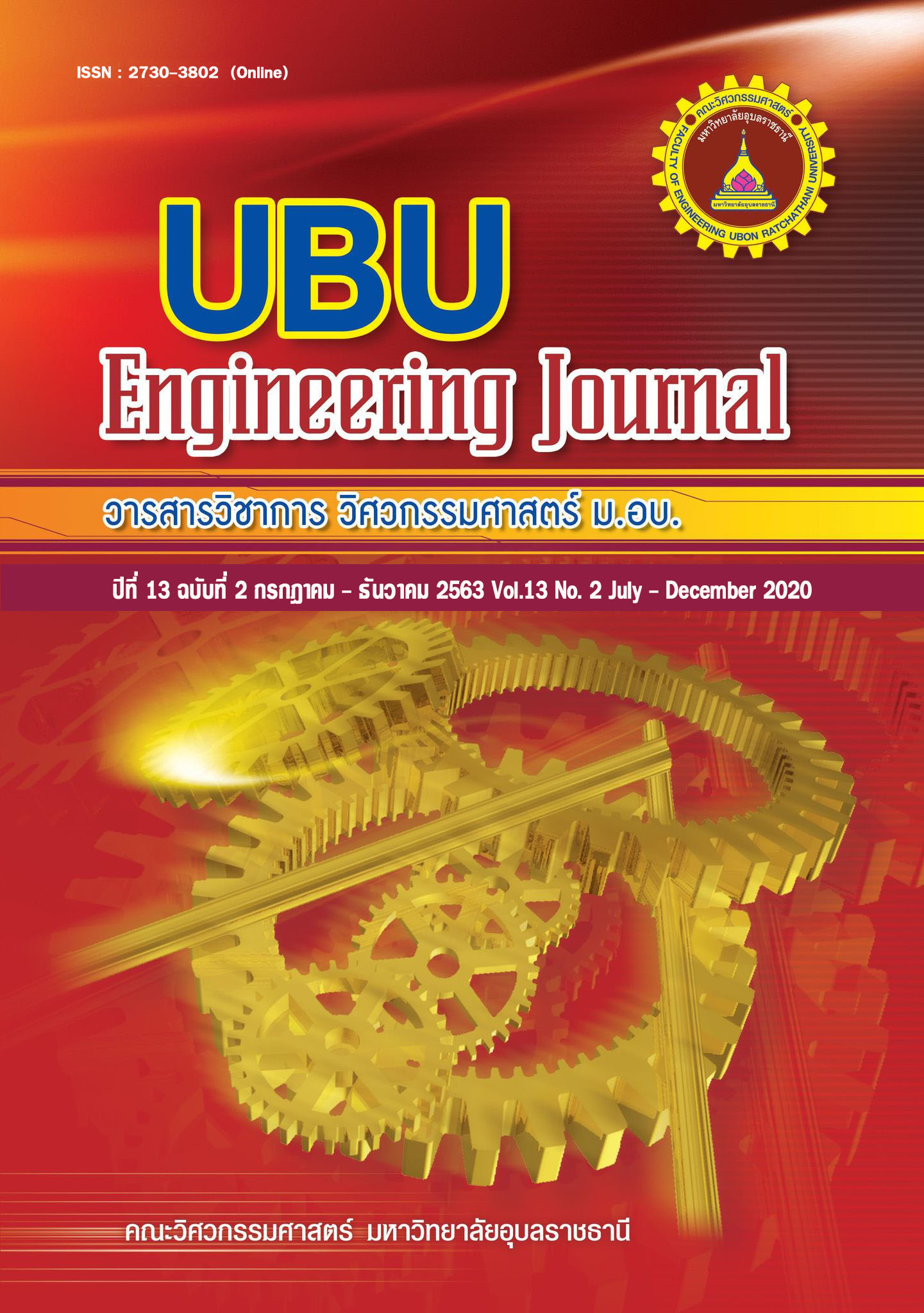Improvement of Khao-Pong Production Process to Create a Sustainable Competitiveness for Baan Nong Loeng Community Enterprise Group, Kan Noi, Kham Khuean Kaeo District, Yasothon
Main Article Content
Abstract
This research aims to create the improvement of Khao-Pong production process development in Ban Nong Loeng Community Enterprise Group, Kan Noi, Kham Khuean Kaeo district, Yasothon province, in order to reduce the waste.
It was found that the Khao-Pong demand rate was so high that it could not be produced and sold to customers within the designated time. After primarily analyzing the problem by using value stream mapping (VSM), it was shown that the production lead time was too long, 2,066.03 minutes, in which there included the processing and waiting time at 1,187.79 and 878.24 minutes respectively. The production lead time in this research started from being delivered the materials to transforming it into Khao-Pong products. It was found that the waiting time came from three activities:
1) rice molding, 2) pressing the rice flatly, and 3) peeling the rice before drying. Here, the check sheet was used to collect the waiting data of all activities. It is found that the waiting time to produce, or work in process (WIP), is 97.22% of the waiting time which is obviously useless and too long. So, it must be eliminated. To fulfill the objective, the Why – Why Analysis was applied to analyze the causes and apply ECRS tools to increase the production efficiency in order to produce rice sheet more quickly, and to set the job standards. The job standards are 1) the jig – a tool for pressing the rice, 2) setting the windproof tools. From the improvement of cycle time in pressing the rice flatly and peeling the rice before drying, the result showed that production’s cycle time decreased for 13.75%, the waiting time decreased for 81.00% but the production lead time decreased for 42.34%. At the same time, the finished products increased from 987 to 1,400 sheets per day. This helped increase the revenue from 284,256 to 403,200 baht per year, resulting in raising an income and developing the economy within the sustainable community enterprise.
Article Details
References
อุตสาหการ มหาวิทยาลัยเทคโนโลยีพระจอมเกล้าธนบุรี.
[2] ประจวบ กล่อมจิตร 2557. เทคนิคการเพิ่มผลผลิตในองค์กร. พิมพ์ครั้งที่ 1. กรุงเทพฯ: บริษัทวีพริ้นท์ (1991) จำกัด, หน้า 166-179, 227-245.
[3] วิเชียร เบญจวัฒนาผล และสมชัย อัครทิวา 2549. Why – Why Analysis เทคนิคการวิเคราะห์อย่างถึงแก่นเพื่อปรับปรุงสถานประกอบการ. กรุงเทพฯ: สมาคมส่งเสริมเทคโนโลยี (ไทย-ญี่ปุ่น).
[4] ปานจิต ศรีสวัสดิ์, วรัญญู ทิพย์โพธิ์, กิตติคุณ นิมิตแสงเทียน และคลอเคลีย วจนะวิชากร 2561. การปรับปรุงประสิทธิภาพและพัฒนากระบวนการแกะสลักต้นเทียนประเภทติดพิมพ์. วารสารเทคโนโลยีอุตสาหกรรม มหาวิทยาลัยราชภัฏอุบลราชธานี. 8(1): 113-123.
[5] คลอเคลีย วจนะวิชากร, เชษฐ์ ศรีไมตรี และ
ปานจิต ศรีสวัสดิ์ 2559. แนวทางการแก้ปัญหาการผลิตหวดนึ่งข้าวเหนียวอัตโนมัติ กลุ่มจักสานชุมชนบ้านหนองขอน จังหวัดอุบลราชธานี. วารสาร วิศวกรรมศาสตร์ ม.อบ. 9(1): 48-55.
[6] คลอเคลีย วจนะวิชากร, ปานจิต ศรีสวัสดิ์ และ วรัญญู ทิพย์โพธิ์ 2558. การประยุกต์ใช้แผนผังสายธารคุณค่าในการเพิ่มประสิทธิภาพการจัดการโลจิสติกส์และโซ่อุปทานหวดนึ่งข้าวอัตโนมัติในจังหวัดอุบลราชธานี. วารสาร วิศวกรรมศาสตร์ ม.อบ. 8(2): 1-13.
[7] สนั่น เถาชารี และระพีพันธ์ ปิตาคะโส 2555. การประยุกต์ใช้แผนผังสายธารคุณค่าในการเพิ่มประสิทธิภาพการจัดการโลจิสติกส์และโซ่อุปทานข้าวในภาคตะวันออกเฉียงเหนือของประเทศไทย. วารสารวิจัย มข. 17(5): 687-705.

